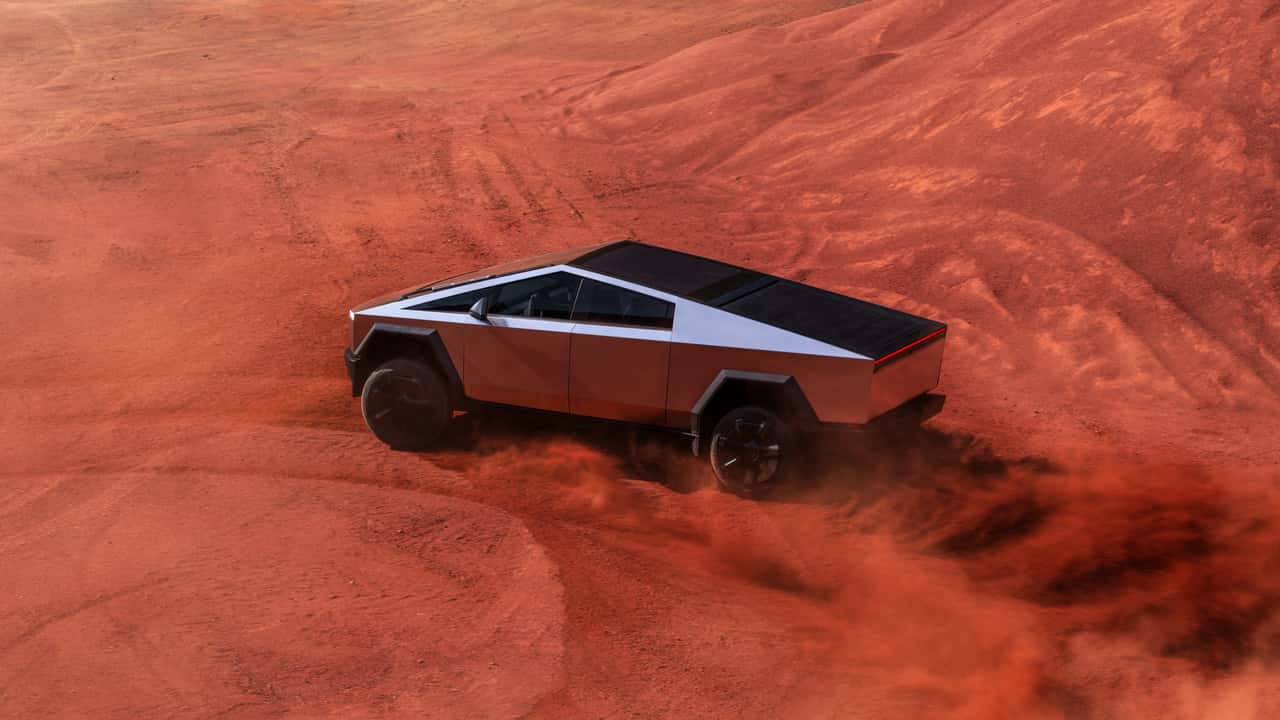The Tesla Cybertruck has been a subject of controversy, with some seeing it as a revolutionary truck and others criticizing its angular design. However, now that more details have been revealed, it seems that Tesla has made some improvements to make the Cybertruck more practical and appealing to a wider audience.
One notable feature is the rear-wheel steering, which is not a groundbreaking technology for trucks. Other trucks have had this feature in the past, and it allows for greater maneuverability by turning the rear wheels in the opposite direction of the front wheels. Tesla claims that this gives the Cybertruck the handling of a sports car and the turning radius of most sports sedans.
Another interesting technology in the Cybertruck is the steer-by-wire system. In this setup, the steering wheel is not directly connected to the wheels through a shaft. This allows for a variable steering ratio, meaning that fewer turns of the wheel are required at slower speeds. Other automakers, such as Toyota and Lexus, have also implemented this technology, and it has shown improvements in their systems.
Additionally, the steer-by-wire system eliminates the need for mechanical components, freeing up space inside the vehicle. This can be used to create larger cabins or to accommodate other features. It is also seen as a step towards full autonomy, as it eliminates the need for a traditional steering wheel with mechanical connections. Tesla has been actively pursuing autonomous driving technology, and a steer-by-wire system aligns with their vision for the future.
While autonomy is still a long way off, these changes should make the Cybertruck’s steering system less frustrating to use. Although Tesla did not confirm whether the Cybertruck has a variable ratio steering at the launch event, the groundwork is there for Tesla to improve the yoke steering wheel.
In conclusion, the Tesla Cybertruck has some innovative features, such as rear-wheel steering and steer-by-wire technology, that make it more maneuverable and potentially improve the driving experience. These advancements show that Tesla is committed to pushing the boundaries of automotive design and technology, even if it comes with some controversy.
Tesla Cybertruck Introduces Steer-By-Wire Technology
In recent years, Tesla has emerged as a pioneer in the electric vehicle market, constantly pushing the boundaries of innovation. The latest addition to their lineup, the highly anticipated Tesla Cybertruck, is no exception. Among its myriad of groundbreaking features, one stands out for its potential to redefine the driving experience - the introduction of steer-by-wire technology.
Traditionally, vehicles have relied on mechanical connections between the steering wheel and the wheels, known as a steering column, to transmit the driver’s input to the road. However, Tesla’s Cybertruck represents a significant departure from this conventional approach, utilizing steer-by-wire technology instead. This cutting-edge system completely eliminates the physical connection between the steering wheel and the front wheels, employing electronic signals to control vehicle steering.
The implementation of steer-by-wire in the Cybertruck brings numerous advantages and opens up new possibilities for the future of automotive design and safety. Firstly, this technology allows for increased flexibility in vehicle design, as the absence of a physical connection permits greater freedom of interior space arrangement. Moreover, the elimination of heavy mechanical components not only reduces vehicle weight but also enhances overall fuel efficiency.
Furthermore, steer-by-wire enhances maneuverability by offering customizable steering settings tailored to the driver’s preferences. Tesla’s Cybertruck allows drivers to adjust the steering response, making it more sensitive or less sensitive, depending on the road conditions or their own personal driving style. Such adaptability not only improves driving comfort but also enhances safety, as drivers can optimize steering response to match specific scenarios.
Moreover, the introduction of steer-by-wire brings with it the potential for advanced driver-assistance features. Tesla has long been at the forefront of autonomous driving technology, and this latest innovation paves the way for even more sophisticated self-driving capabilities. With the steering system being controlled electronically, it becomes easier to integrate advanced driver-assistance systems, such as lane-keeping assistance or automated parking features. This enables the Cybertruck to offer a truly futuristic driving experience, setting it apart from any other vehicle in its class.
Despite these considerable advantages, the implementation of steer-by-wire technology does raise concerns regarding safety and reliability. Skeptics argue that a potential failure in the electronic components controlling the steering system could result in a complete loss of steering control. However, Tesla has always been synonymous with reliability, and it is unlikely that they would introduce a technology that compromises the safety of their vehicles. As with any technological breakthrough, thorough testing and rigorous safety standards will undoubtedly be conducted to address any potential risks.
In conclusion, Tesla’s introduction of steer-by-wire technology in the Cybertruck represents a significant leap forward in automotive design and safety. By eliminating the physical connection between the steering wheel and the wheels, Tesla has not only enhanced vehicle flexibility and maneuverability but has also paved the way for more advanced driver-assistance features. While concerns about safety and reliability are valid, it is essential to recognize that Tesla has a proven track record of delivering innovation while maintaining the highest standards of safety. With the Cybertruck, Tesla has once again showcased their commitment to pushing the boundaries of electric vehicle technology.

